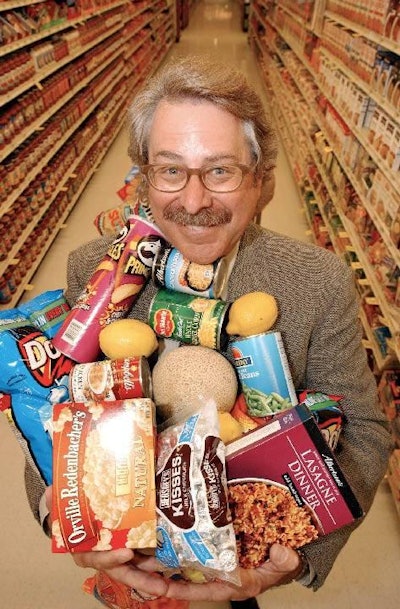
“I see the growth of different analogue products, hemp cheese and hemp oil and soy products, products with specific health benefits that will challenge poultry and red meat products,” says Philip Lempert, a food futurist in Santa Monica, Calif.
He also sees the growth of alternative protein sources that contain “nutraceuticals,” natural substances added to food that can prevent or treat certain diseases.
“Protein cases will change substantially,” he says, adding that traditional protein products will be challenged on pricing, versatility, and health attributes.
That said, Lempert does not see much growth in consumers who become vegetarians or vegans. Rather, consumers will supplement their diets of eggs, chicken, beef, and pork, with occasional meals of vegetable-based protein products.
Eggs have “unique opportunity”
Lempert thinks that egg producers have less to worry about than other traditional protein producers because eggs have a “unique opportunity” to be enhanced with lutein for improved egg health and other attributes from layers fed special diets. Lutein-enriched eggs have been shown to increase the level of lutein in people far greater than spinach and lutein supplements.
On broilers, Lempert sees the possibility to alter feed to give chicken “different flavor and textures. What can we do beyond a marinated product? What’s the next thing after chicken nuggets?” He sees the possibility of chicken on a stick—similar to popsicles—that can be microwaved or eaten cold with sauces.
For red meat, Lempert looks for changes in the shape of bologna and salami that fits better in sandwiches, and, like poultry, changes in feeding practices to alter the end product.
Behind many future trends, he says, will be the concern over health. Lempert notes, for example, that New York City recently banned trans fats, and he expects more government agencies to follow suit. On the fat issue overall, he says that “it looks like we’re going to have to get the government involved—but that’s not a good thing.”
Additional changes protein producers should ready themselves for, he says, are that consumers increasingly will demand to know the farm of where the product they are buying came from, both from a food safety point of view and growing consumer interest in whether animals are treated humanely, Lempert says.
One thing Lempart says will have to change in the years ahead is how long it takes to link a disease problem back to its source. But overall on food safety, he says it’s not a case of needing more rules, but rather “we need to give USDA and FDA back their money for inspectors. We have to put people back into the field.”
Taste, affordability, and convenience
Yet despite consumer demands on these fronts, they still will want taste, affordability, and convenience. But there will be two groups of consumers—those who may buy organic beef and plant-based proteins, despite their higher cost—and those who don’t have the income and must buy strictly on price.
Lempert also sees changes on the retail end of the food business, particularly in the way food is packaged. On eggs, for example, he sees smaller packages, and packages that could be popped right in the microwave to make hard-boiled eggs. And with chicken, he looks for the industry to get rid of the paper so chicken is just wrapped in plastic, which he says is more attractive.
Whole Foods Markets has really woken up retailers, he says, and that’s changing the industry for three reasons: the chain emphasizes health, it celebrates food with attractive displays, and the employees really want to work there. Whole Foods has really forced other retailers “to want to get as close to consumers as they can.”


















